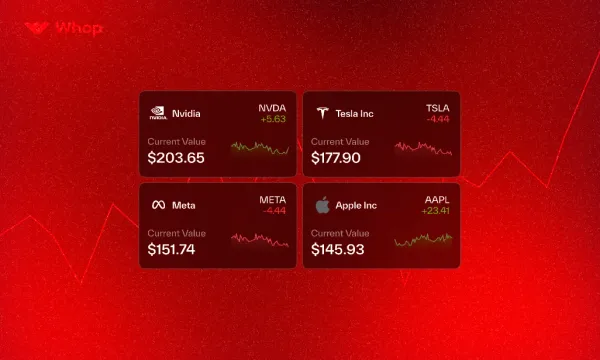Financial independence is something far easier born into than achieved, and it’s a given that this state remains the dream for most people. While the media may idealize lottery winners and meme coin millionaires, the most reliable way to attain your financial goals is likely to be long-term investment.
This article will take you through the basics of building a long-term investment strategy, from concepts such as the establishment of goals and risk tolerance to the different approaches you can take to build wealth. So, read on!
Why Invest Long-term?
As mentioned, financial independence tends to be a major goal for many people, and it can be achieved through judicious investment. However, the desired ends may be quite different from person to person. You may wish to retire from the workforce by a certain age, or develop a safety net of investments to fall back on in the case of unexpected events.
Whatever your financial goals are, it’s good to outline them so you can better build your investment strategy. This means setting a time horizon in order to have a good idea of how much wealth you need to accrue and how many years you have to do it.
Long-term implies anything over one year, but ought to be strategic—if you’re 24 and want to retire by 40, you’ve got 16 years to build up your net worth to where you need it.
Some goals, such as those related to net worth, may be achieved differently. After all, wouldn’t $100 at the local newsagent stand you a decent chance of winning the Powerball or Eurojackpot? Alternately, a few days on speculator forums such as Reddit’s r/wallstreetbets might have you thinking that you can turn $50k into $50 million in a week.
The kicker is, everything from lotteries to leveraged memecoin trading to options speculation is absolutely viable and can certainly hit your goals. What you’ll need to think very seriously about, therefore, is your appetite for risk.

Risk Tolerance
Investing, trading, and even speculation come down to one simple concept—risk and return. The general rule of thumb is that high returns always come with high risks. The vast majority of lottery tickets expire worthless, and it’s only one in many millions that ends up paying out so the risk of buying a ticket is practically 100%.
A lot of judicious investors tend to be skeptical of investments that offer outsized risks. Ponzi schemers such as Bernie Madoff and Allen Stanford offered market-beating returns, and both of them operated for decades before being found out.
That said, even low-return investments can be risky. Bank accounts are supposed to be the epitome of safety, but 2023 has seen several bank collapses including Credit Suisse. Bonds, which are traditionally regarded as low-risk instruments, can also have certain risks as interest rates rise and borrowers struggle to make payments.
Therefore, deciding on how much risk you’re comfortable with is another essential step when it comes to building your portfolio and deciding on your long-term investment strategy. It’ll help you narrow down your approach and help you develop a clear plan, as well as what mix of assets and investments you’ll consider.
Long-term investment strategies
We’ve already mentioned portfolio building, and that’s one of the key elements of long-term investment. Various other wealth-building strategies such as options trading leave you with nothing if your bets don’t pay off, but a portfolio means that you’re building your net worth, and you own assets that you can liquidate in case of a rainy day.
There are plenty of ways to build a portfolio that can meet your goals, so let’s take a look at some of the common strategies for doing so:
Dollar Cost Averaging
Often referred to as just DCA, this approach suits most people who have to balance the books between income and expenses every week or month. Once you have an idea of your finances, it’s simply a matter of setting aside a certain amount of money to be invested as regularly as possible.
Whether it’s $500, $100, or just terminating your Netflix subscription and investing the money instead, the point of the DCA strategy is to invest money into an asset or set of assets consistently.
This ensures that the peaks and troughs of the market don’t really affect you, since your investments average out—while you’re not going to catch the bottom and make hay on any given year, it also means that you’re unaffected if you invest at the top before a crash.
DCA might sound like a no-brainer of a strategy, but sometimes it isn’t that easy. You may get a bonus that you want to invest, or receive a sizable inheritance. Investing all of that money as a lump sum now becomes an option but so does the risk of catching a peak. The sum can still be dollar cost averaged, though, by dividing it up across a set period of time and investing regularly.
Diversification
One of the most preached (and indeed practiced) tenets in investing is the mantra of building a diversified portfolio. The theory here is that since you’re investing in a wider range of assets or even the economy as a whole, the risk of one stock or even industry crashing isn’t going to take your portfolio down and potentially ruin years of work.
There are obvious merits to this approach, and you should at least consider it when building your long-term investing strategy. Legendary investor Warren Buffet is an excellent example of this—his Berkshire Hathaway fund has long been focused on Apple, but around half of its sizable portfolio is devoted to other stocks.
Most non-professional advisors would suggest that you diversify far more than that, though. This is surprisingly easy to do using instruments like ETFs and mutual funds—you can DCA into exposure to entire indices and industries in this manner.
Growth and Value Investing
Often considered the classic approaches to investing, growth and value investing are two different strategies but both look to buy into assets on the cheap.
Growth investing is the term given to focusing on companies that are expanding at a fast rate and appear ready to step up to the next level in terms of growing the top line and then moving into a phase of profitability. Buy low and sell high, or just hold for the long term.
Value investing, meanwhile, is when you research a company and look at its fundamentals, using various metrics such as price to book value and price to earnings. The name of the game here is to find companies that are undervalued by the market and, again, buy them low and sell high.
In terms of long-term investment, you may be planning to hold certain stocks for years or even decades. As such you may not gain as much from value investing or even growth investing, but it certainly never hurts to get in before a stock starts to rise. This is especially true if you’re investing in lump sums since the right growth or value investment can give your portfolio a welcome boost.
Dividend Investing
Another classic investment style, dividend investing can be underrated by those looking for a quick payoff but is invaluable to the long-term investor.
This strategy focuses on investing in stocks that have a record of paying dividends, or a certain amount of cash per share you own. Some investors look at these dividends as a form of income, and it’s entirely possible to retire and live on your dividend stocks if you do a good job of building a portfolio of them.
Another way to approach dividends is to reinvest them. Doing so allows you to harness the power of compounding—each time you’re paid a dividend, you use the money to buy more of the stock, netting you a greater dividend at the next payout. This is an extremely powerful strategy for long-term investing.
Portfolio Management
Given that you’re trying to build a long-term investment strategy, the temptation is often to simply set up a group of regular trades and let them run their course, or buy some assets and then let them ride. While holding for the long term is a good idea, it’s often wise to monitor your portfolio to make sure that you’re on the ball.
While too much tinkering isn’t a good idea either, it’s often possible that trends, macroeconomics, and even geopolitical factors start changing the game. A different administration may change policies in certain sectors, or scientific discoveries might lead to new markets.
New asset classes can also come calling, and getting in early might be a good idea. Cryptocurrencies are starting to hit the mainstream, and even long-term critics such as JPMorgan are now on board with Bitcoin.
It’s also worth making sure that your portfolio of assets is in good custody. It’s always worth talking to a financial advisor to make sure that your assets are being held safely, or whether you need to look into things like trusts.
Lastly, remember that custody itself means that you don’t actually own those assets. Stocks with a broker aren’t actually yours—you’re a beneficial or street name shareholder, not a registered shareholder.
For full rights and security such as management of stocks with respect to events like inheritance, registering your equities with a transfer agent is often the safest option for the long term.
Key Takeaways
Building a long term investing strategy is all about setting smart, achievable goals. Once you know what you want and have a target in your sights, it’s far easier to figure out your risk tolerance and decide on a strategy to build your portfolio.
👉 If you’d like to connect with other investors and discuss some of the strategies outlined here, remember to check out Whop’s trading page! Whop is the best place to find the top communities in finance, and the perfect place for you to list any digital products or services of your own.
🏆 Read next: Whop's Top 10 Best Trading Discord Servers


![Top 20 Best Forex Trading Discord Servers [2024]](/blog/content/images/size/w600/2024/05/Top-X-Best-Forex-Discord-Servers.webp)

![Top 25 best trading Discord servers [November 2024]](/blog/content/images/size/w600/2023/08/trading-discord-servers-large.png)
![Top 15 best options trading Discord servers [November 2024]](/blog/content/images/size/w600/2024/05/Top-12-Best-Options-Trading-Discord-Servers-2024.webp)